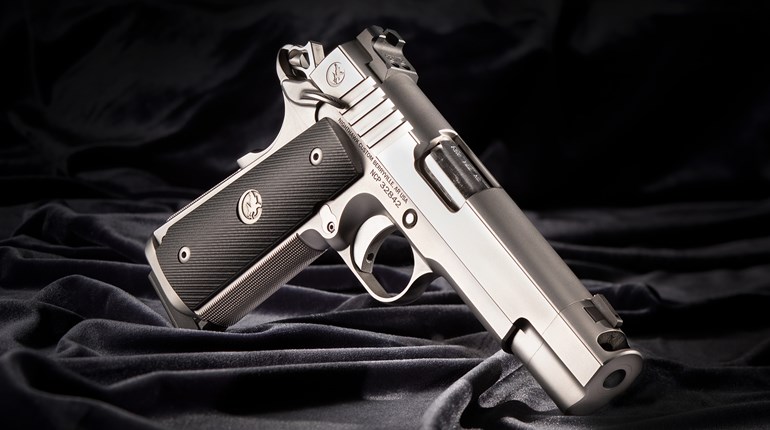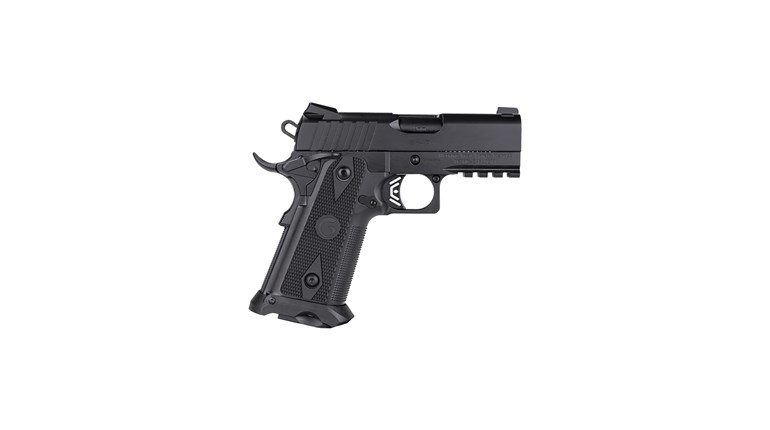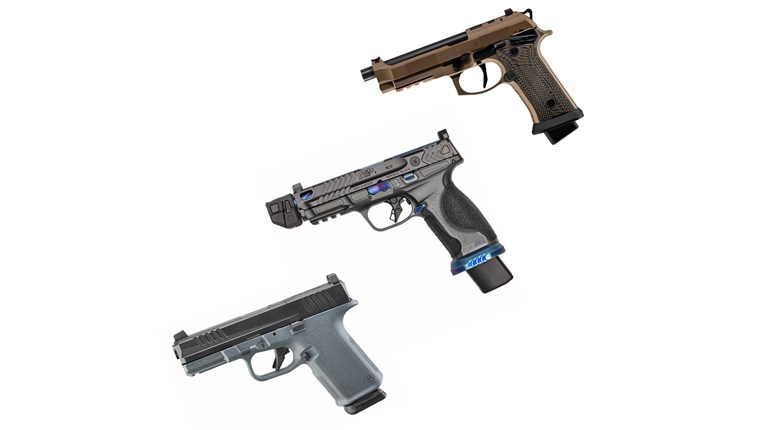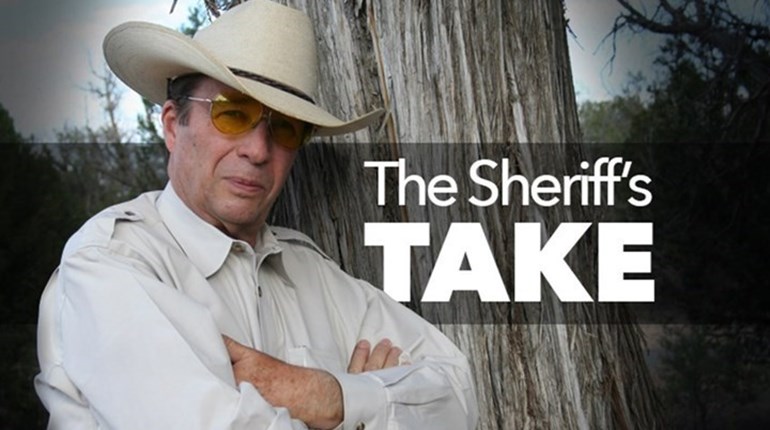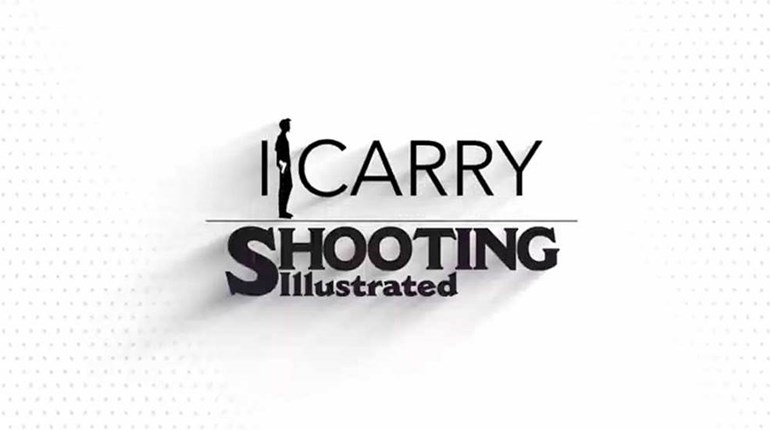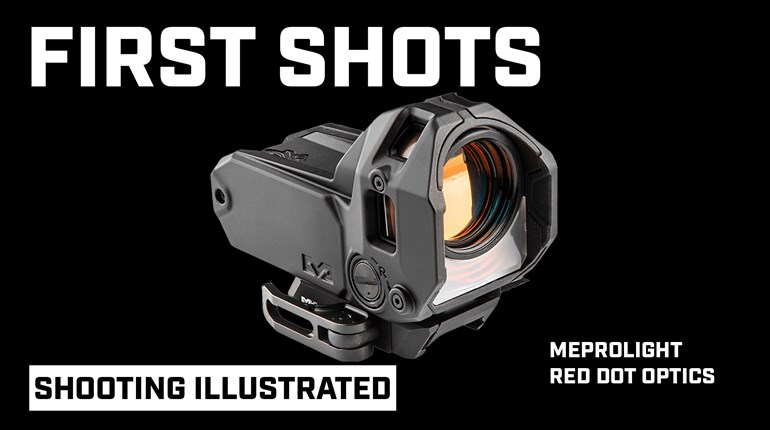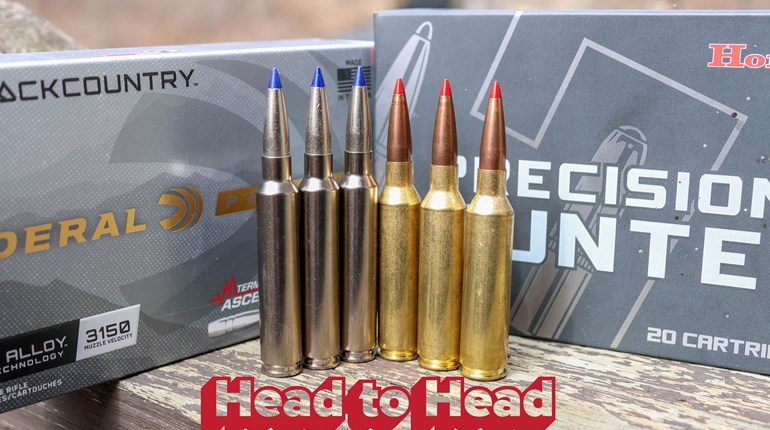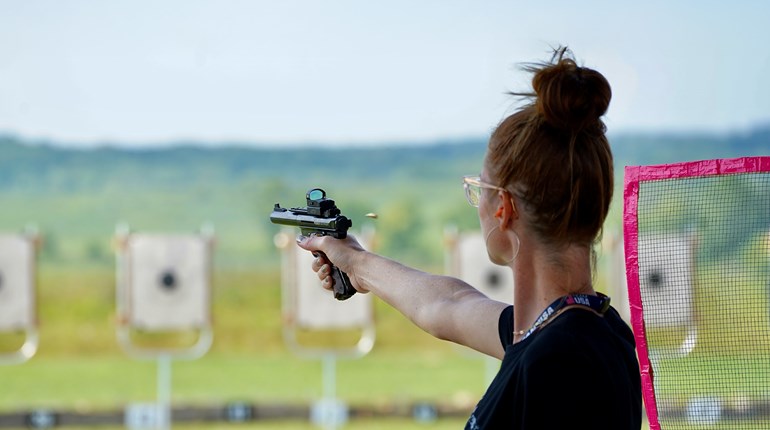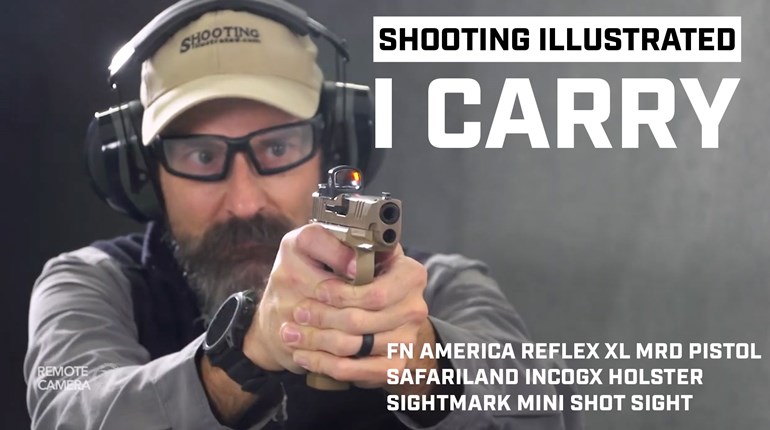
The bespoke Colt Mark IV Series 70 Government Model above is one of many superbly embellished firearms currently on display at the National Firearms Museum in Fairfax, VA.
In the Southwest—out where the skies are huge and people enjoy the wide-open freedom of it all—they carry guns. It’s easy to obtain a concealed-carry permit in states where one is still required, and in Arizona and Texas, the U.S. Constitution is your permit. In many jurisdictions, it was—and still is—acceptable to carry a handgun openly holstered on your person. I don’t see this as a manifestation of a so-called “gun culture” (whatever that is), but rather a simple acceptance of the gun as a necessary tool.
Sure, there’s a certain pride in living where your status as a free man or woman is manifested in a quality firearm that openly rides on your hip. It is accepted and often seen, but seldom results in many turned heads. They just carry fancy fightin’ iron out here—cleaned, oiled, loaded and ready to go.
They even carry guns to social occasions, the most important of which is the weekend barbecue. A lot of handgunners have a special gun they carry in the same manner a lady breaks out her nice jewelry for special occasions. Naturally, some of these guns are embellished in ways that make the gun look a little fancier. After all, these guns are for dressing up, sort of “Sunday-go-to meetin’” formal wear. But, enough discoursing on the socially acceptable aspects of going heeled; let’s get to the actual shooting irons fancy enough to be termed BBQ guns. Carried in some form of appropriate holster, the BBQ gun is intended to show off some fancy surfaces. Usually, that means there’s a little engraving involved.
Engraving is an elegant touch that improves the looks of any handgun. Shooters have mixed feelings about paying the price for a first-rate engraving job on a gun. I recall the writings of one of my colleagues of many years past. He went on at great length about how he came to the decision to engrave a favorite Smith & Wesson, the long motor trip to the engraver’s shop and how much he enjoyed the discussion with the engraver about coverage, details, etc. The funny part of the story was his humorous contention that the gun shot better after it was engraved. Now, that’s preposterous, but this guy almost had you believing the gun performed better with some scrollwork incised into its surfaces. He was kidding, but another associate made a similar claim and he wasn’t. This writer was so enamored of engraving, he claimed that it was a practical addition to a .45 semi-automatic because it hid surface scratches. In my view, if you like engraving, by all means, have it done and enjoy the results. Engraving is hardly practical, but it is an old, traditional technique and is beautiful when properly executed. It’s right at home on a fancy BBQ gun.
While my working handguns tend to wear the scratches and dents of hard use, I do have a couple of guns that have been fancied up a little. Since engraving is out of my price range, I resort to custom grips of various kinds. They are utilitarian in that they usually improve the handling of the gun, but I like them more for their improved appearance. I have one pair of scrimshawed ivories on a Colt Peacemaker, with most of the others being some form of exotic wood. Contrary to what you may have heard, ivory is legal to own and use, as long as it is imported with the proper licenses. There is enough of it around, so the price is not completely out of sight.
As a longtime admirer of various woods, I appreciate the beauty of many different ones made for the guns that will pair with them. Unhappily, the number of guns able to accept wooden grip panels are declining. Most of the modern semi-autos have molded polymer frames and you can’t install grips on them. But revolvers, as well as pistols like the Hi Power and beloved 1911, can take wooden grips. There are still many craftsmen in the country who make striking versions of these things and they are a great way to dress up a favored handgun for the Sunday BBQ out at the ranch.
Interestingly, the guy who started the BBQ gun tradition in America may well have been Sam Colt. The Colonel hired the very best engravers in the country to embellish early blackpowder guns. He used some of these early gems to help sell quantities of his various models. Thus was born the tradition of the so-called “presentation” handgun. Most were masterpieces of the engraver’s craft, so much so that the Colt Custom Shop gun is recognized as a work of art. The Colt Custom Shop still builds some superb guns, the type so beautiful that they will probably never be used for their intended purpose—but they could be.
On a visit to that shop some years ago, I saw just such a work of art. It was a pair of matched Peacemakers that were cased in fancy walnut and stocked in the one-piece style with ivory. Fully engraved with the wings of an Air Force pilot, the emblem of the Texas Rangers baseball team, the Lone Star of Texas and other items, the two revolvers commemorated the lifelong career of a Texan who we can all identify. As BBQ guns go, these two were as beautiful and significant as any I have ever had the pleasure of seeing. In fact, given the numerous hours of artistry and craftsmanship that went into transforming those Peacemakers, to call them mere works of art would be a severe understatement. They may indeed be worn at a BBQ one day. The Colt craftsmen who created them even allowed me to briefly handle these superb, one-of-a-kind sixguns.
When I asked if they wanted to see the “Road Agents spin,” they took the guns back rather abruptly. It seems they were unwilling to risk dropping the Presidential fightin’ iron.










